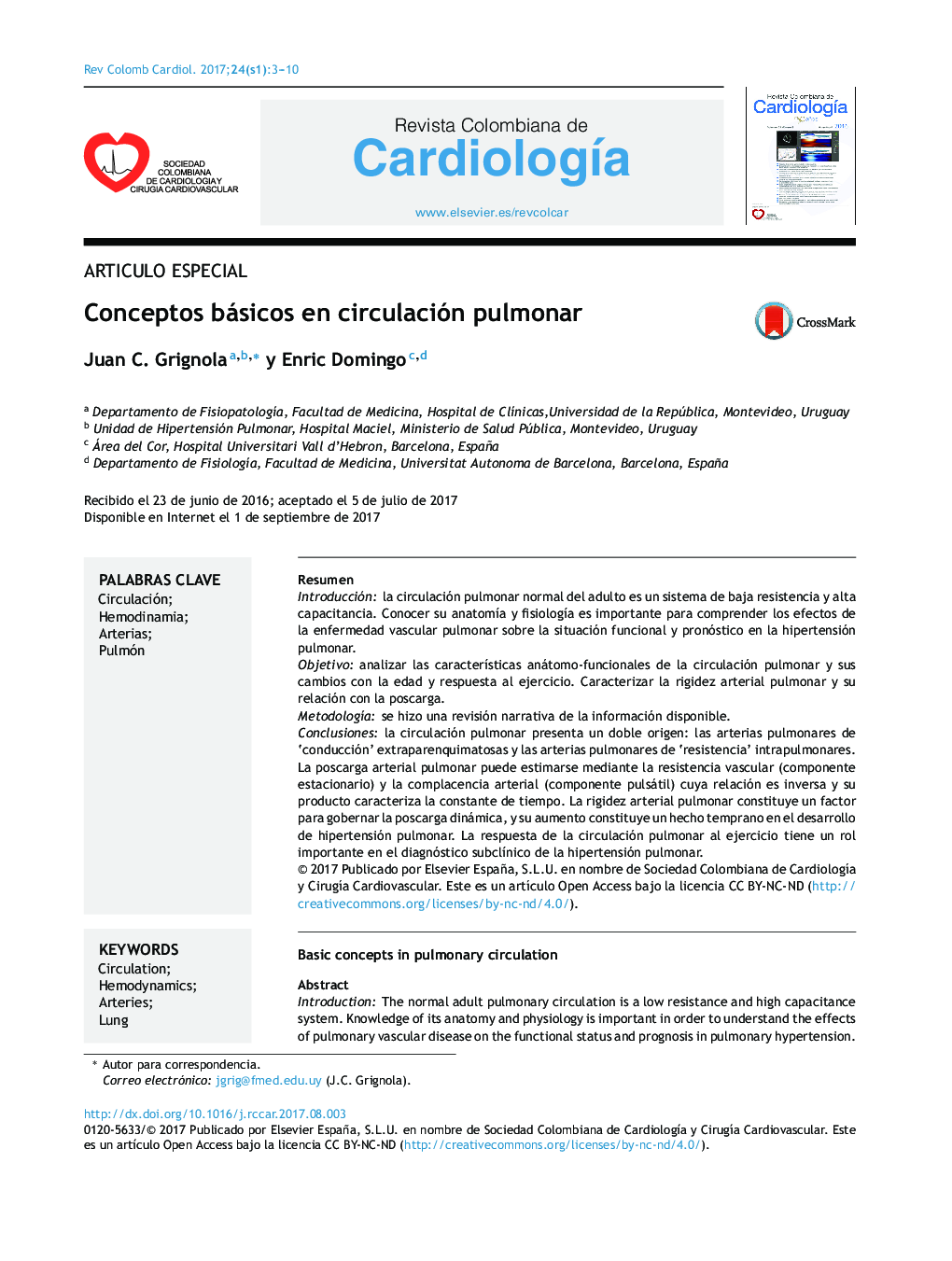| Article ID | Journal | Published Year | Pages | File Type |
|---|---|---|---|---|
| 5620489 | Revista Colombiana de Cardiología | 2017 | 8 Pages |
ResumenIntroducciónla circulación pulmonar normal del adulto es un sistema de baja resistencia y alta capacitancia. Conocer su anatomÃa y fisiologÃa es importante para comprender los efectos de la enfermedad vascular pulmonar sobre la situación funcional y pronóstico en la hipertensión pulmonar.Objetivoanalizar las caracterÃsticas anátomo-funcionales de la circulación pulmonar y sus cambios con la edad y respuesta al ejercicio. Caracterizar la rigidez arterial pulmonar y su relación con la poscarga.MetodologÃase hizo una revisión narrativa de la información disponible.Conclusionesla circulación pulmonar presenta un doble origen: las arterias pulmonares de 'conducción' extraparenquimatosas y las arterias pulmonares de 'resistencia' intrapulmonares. La poscarga arterial pulmonar puede estimarse mediante la resistencia vascular (componente estacionario) y la complacencia arterial (componente pulsátil) cuya relación es inversa y su producto caracteriza la constante de tiempo. La rigidez arterial pulmonar constituye un factor para gobernar la poscarga dinámica, y su aumento constituye un hecho temprano en el desarrollo de hipertensión pulmonar. La respuesta de la circulación pulmonar al ejercicio tiene un rol importante en el diagnóstico subclÃnico de la hipertensión pulmonar.
IntroductionThe normal adult pulmonary circulation is a low resistance and high capacitance system. Knowledge of its anatomy and physiology is important in order to understand the effects of pulmonary vascular disease on the functional status and prognosis in pulmonary hypertension.ObjectiveTo analyse the anatomic-functional characteristics of pulmonary circulation and its changes with age and response to exercise, as well as to describe pulmonary artery stiffness and its relationship with afterload.MethodologyA narrative review is presented on the information available.ConclusionsThe pulmonary arterial circulation is of dual origin: the extra-parenchymal “conduction” pulmonary arteries and the intrapulmonary “resistance” pulmonary arteries.The pulmonary arterial afterload can be estimated using the vascular resistance (stationery component) and the arterial compliance (pulsatile component) which has an inverse relationship, and its product represents the time constant. Pulmonary artery stiffness is a factor to regulate the dynamic afterload, and its increase is an early indication in the development of pulmonary hypertension. The response of the pulmonary circulation to exercise has an important role in the sub-clinical diagnosis of pulmonary hypertension.
